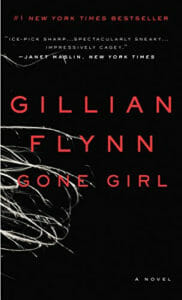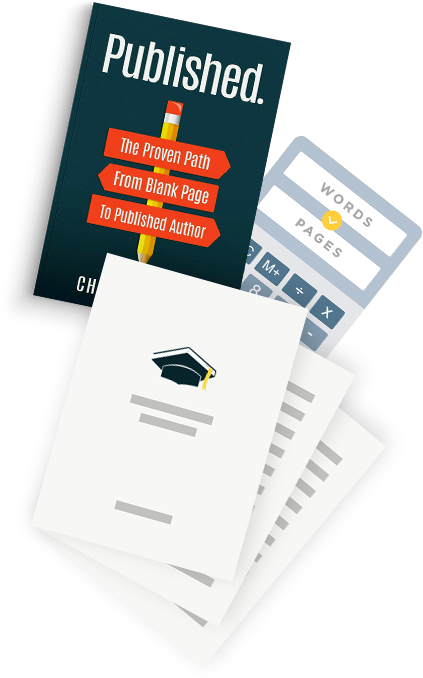Writing thrillers takes work. It takes practice and know-how to balance high stakes and high stress over a long period of time. Too much, and the novel starts to feel predictable or melodramatic. Too little, and it’s not a thriller.
How can we, as writers, keep our readers hooked all the way through our thriller? What makes a good thriller, anyway, and what’s the difference between thriller and suspense or horror?
In this article, we’ll answer all of these questions and give you some tips for outlining and drafting your thriller novel. By the end, you’ll be ready to stress out any reader who picks up your book (in the best way imaginable)!
Table of Contents
What defines a thriller novel?
First things first: what makes a thriller novel a thriller novel?
Thriller novels use heightened emotion to keep their readers hooked. They often feel cinematic and involve high stakes and dramatic plot points. Thriller often overlaps with other genres, namely mystery and crime novels.
Thrillers are defined by how they make the reader feel, and thrillers make their readers feel anxious. They aim to make readers unsettled, nervous, and eager to read what happens next. All fiction should elicit some amount of stress in the reader in the form of conflict, but in a thriller novel, the stress is the main feature.

What are some examples of thriller novels?
If you’re going to be writing thrillers, you’ll need to read lots of them. Here are five thriller novels to start you on your way—think of these as a starter kit for reading thrillers.
2. The Woman in Cabin 10 by Ruth Ware
3. A Time to Kill by John Grisham
4. American Psycho by Bret Easton Ellis
5. Big Little Lies by Liane Moriarty

What are the key elements of a thriller?
These elements are commonly found in all types of thriller novels.
1. Suspense
Suspense is how an author builds tension throughout the story. It’s necessary in any genre, but it’s absolutely vital in thriller novels. Ultimately, your goal for the reader is that they never want to put the book down.
How do you make sure that happens? End each chapter (or most chapters) with a cliffhanger. Throw in a twist. Change up the pacing. More on this in the coming points.
2. High stakes
If you want to stress a reader out, you need to give them something to be stressed about. This means you need a plot with high stakes. The characters must have a lot on the line—it needs to really matter whether or not they succeed. This is why thrillers are so often crime or mystery novels, especially murder mysteries, and it’s why you don’t see a lot of thrillers about, say, bake sales or fantasy football teams.
3. The big question
In a thriller, the plot should be driven by one big, important question. Think Gone Girl—from the start, the reader is asking themselves what happened to Amy, and whether Nick had anything to do with it. This question drives much of the suspense throughout the novel. It fizzles in the back of a reader’s mind and laces everything that happens in a layer of nail-biting anxiety.
4. Realistic pacing
Readers will get worn out with nonstop action. Real-life doesn’t actually include bombs going off every five pages and shootouts around every corner. The suspense and intrigue need to be constant, but the action doesn’t have to be. Oftentimes an interesting and punchy dialogue example, dream sequences, or the character reviewing the disparate facts and puzzle pieces is enough to keep you turning the page.
Types of thriller novels
On Masterclass, their site outlines eight types of thriller novels—this list isn’t all-inclusive, but it covers most of the thrillers you’ll come across.
Also, note that there’s often overlap between these sub-types. Gone Girl, for example, is a psychological thriller for its use of an unreliable narrator and its exploration of its characters’ psyches and relationships. It’s also a crime thriller because it centers around a missing person investigation.
We’ll follow the Masterclass list, but explain each subgenre in more detail.
1. Psychological thriller
Psychological thrillers concern themselves with the inner workings of people’s minds. They’ll often be about subjects like mental illness, substance abuse, trauma, morality, and crime. Psychological thrillers are likely to use unreliable narrators, since unreliable narrators are great for bending reality and being generally creepy.
2. Action thriller
Action thrillers are distinguished by their focus on physical danger. In an action thriller, most of the excitement comes from watching characters navigate action sequences. An action-thriller will have things like car chases, shoot-outs, or fist fights. Action scenes will probably come up in other types of thriller novels, but again, in an action thriller, the action scenes are the main attraction.
3. Crime novel/crime fiction
As you might have guessed, these types of thrillers revolve around solving a crime. Sherlock Holmes is the epitome of this genre. The mystery might be a murder, a series of robberies or assaults, a drug cartel, or any other criminal activity. The drama comes from the nature of the activity and the solving of the crime by our protagonists.
4. Political thriller
Political thrillers take place within the government. The tension comes from the high stakes—if the problem isn’t solved, there are probably some huge ramifications for the nation or government. Usually, a political thriller explores the nature of politics and forces the audience to consider their stance on political issues.
5. Mystery thriller/mystery novels
In a mystery thriller, the characters are working to solve a mystery. This is usually a crime, but doesn’t necessarily have to be—the justice system isn’t always involved. The tension comes from seeing the perpetrator captured in time to avoid further crises.
6. Spy thriller
Think James Bond or Jason Bourne. These thrillers follow a spy, usually working for a real or fictional government agency, and the excitement comes from watching the spy navigate their mission. Often, this genre combines action, politics, and crime, and there’s some focus on the spy’s psychological state as well for added tension.
7. Legal thriller
Think John Grisham. Legal thrillers focus on a specific legal investigation. Characters will be in a court case navigating the justice system. These usually showcase the impacts of the legal process on the characters involved, and they also ask readers to explore their understanding of justice.
8. Science fiction thriller
Think Jurassic Park! Or the Marvel series. Science fiction thriller authors take a look at science and ask themselves: how could this be used in the weirdest, most stressful way possible? Sci-fi thrillers often explore the ramifications of scientific experimentation, and they’re often rooted in some believably scientific premise (though your suspension of disbelief may vary).
Tips for writing thrillers
Wondering how to write a story that captivates readers from page one to the end? Well, why not start by checking out some of the best contemporary thrillers to inspire your own work. Follow these tips to create a fast-paced, interesting thriller that not only hooks your audience, but sticks with them after they’ve finished reading.
1. Focus on crafting great characters
Writers often lose themselves in the technical aspects of crime or mystery novels. They’ll write pages explaining the layout of a museum or dedicate an entire chapter to the ins and outs of a given chase sequence. In doing this, writers detach from characters, and this is the fastest way to lose a reader.
People care about people. Readers are interested in compelling characters above anything else. In any story, the conflict and intrigue come from wondering what’s going to happen to the characters. If the readers don’t care about the characters, especially the main character, they’re not going to be glued to the page to find out what happens to them.
Not every character can be dynamic though, so check out these articles on how to write flat character arcs, or how to start with a struggling character and create a redemptive character arc.
Create a compelling protagonist with a vested interest in the plot. Make them emotionally involved in the story so that your readers get emotionally invested, too. A reader will forgive any number of plot contrivances in the name of a character they love, but they’ll be less likely to care about a technically perfect plot if they have to see it through the eyes of an uninteresting character.
Need help developing your characters? Check out this free resource below.
2. Create an interesting problem with high stakes
Readers might forgive plot contrivances for characters they love, but that doesn’t mean the plot shouldn’t be interesting!
The central conflict of your thriller should revolve around an interesting problem with high stakes. If you’re writing about a serial killer, what’s interesting about this particular serial killer? If it’s a murder mystery, what about this particular murder is different and unique?
The problem should also have high stakes. It should matter deeply to the main character that the problem is solved—maybe the killer is coming for the protagonist or the protagonist’s loved ones next, or maybe the fate of the nation hangs in the balance. Again, you want the character emotionally connected so that the audience will be emotionally connected, too. Make it personal.
3. Don’t make it easy
At the risk of sounding too obvious, a thriller should, first and foremost, be thrilling. If a reader can tell who the killer is on page three, they’re not going to be interested in reading the rest. If they do keep reading, they’re probably going to be frustrated that the characters can’t seem to see the obvious solution dangling in front of them.
To make your thriller satisfying and exciting, you’ll want to put your characters through some serious difficulties. Throw obstacles in their paths. The bigger the obstacle, the more satisfying it’ll be to watch the character overcome it. Don’t be afraid to really change up the status quo for your characters.
Have your characters lose their jobs, their spouse, or their friends. Have them get lost, have them get caught by the villain and have to fight their way out, and take away all their weapons. Making it as difficult as possible for the characters to achieve their goals will not only make the reader more interested to see what happens next, but it’ll also make the reader respect and like the characters more for gritting their teeth and persevering.
One easy way to nail this is to create a great villain. The villain should be powerful, unpredictable, and have some personal connection to our main characters. Usually, they have just a single tragic flaw. We talk a lot more about villains and supporting characters here.
4. Nail the pacing
This is an entire subject to study on its own, so this is a very, very quick rundown of how to nail the pacing in your thriller novel.
First, keep your action scenes quick. Any fight sequence should be vital to the plot, contain high stakes for everyone involved, and change the status quo when it’s done. These scenes should also be fast-paced. It should happen as quickly as possible (without losing important details). Instead of focusing on the technical movements of the fight, focus on the character’s reactions, feelings, and problem-solving skills.
Next, keep the pace varied. Not every single scene in your thriller should be fast—you need slower scenes to build suspense. Maybe the cop just finished a day of high-stakes interviews with suspects, comes home and debriefs with his wife, and settles into bed. But then, he has a wild dream that in some way seems connected to solving the mystery.
Balancing high-drama scenes with slower scenes will make your book more balanced, and it gives you more room to build momentum as you work toward the climax.
Finally, don’t neglect your climax! All the momentum in your story should point toward it, and when it happens, it should be all-hands-on-deck. This is why it’s often hard to put a good book down once you’ve gotten about three-quarters in. Everything builds to the climax, and if you’ve done your job, the reader will be eager to see the story through.
What’s Next?
If you saw this article through to completion, we must have kept the suspense at just the right level for you.
At Self-Publishing School, we have a ton of resources to help you write and publish your novel. If you’re serious about getting started and writing a thriller, check out this free training:





